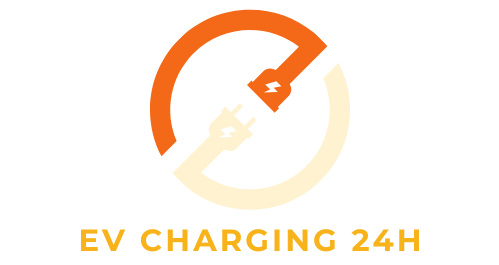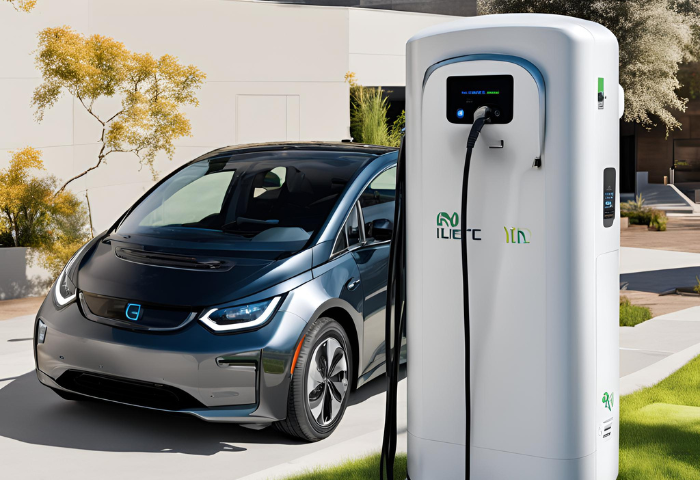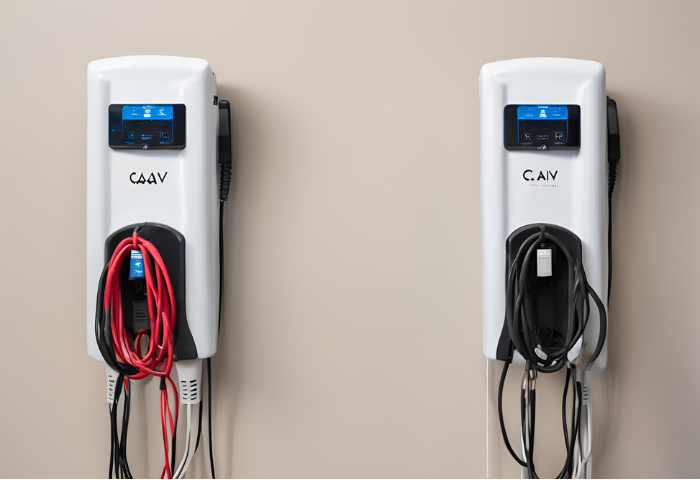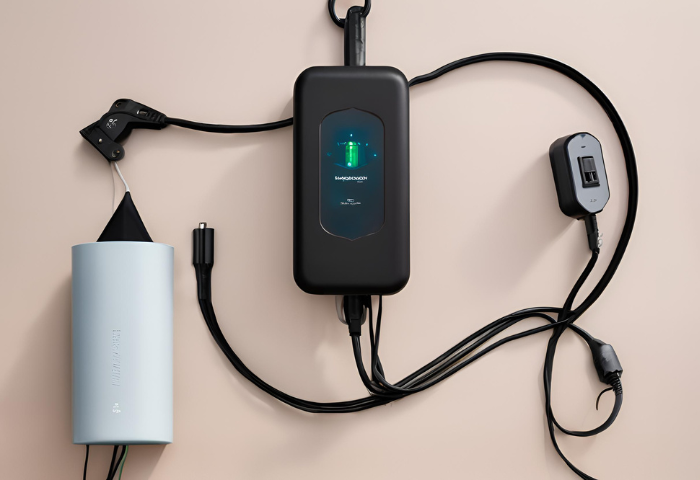Grizzly EV Charger: Fast, Reliable, and Future-Ready Charging Solutions
In an era where sustainability and efficiency are paramount, the Grizzly EV Charger stands out as a symbol of fast, reliable, and future-ready charging solutions. Designed to meet the evolving needs of electric vehicle owners, the Grizzly EV Charger embodies cutting-edge technology, robust engineering, and a user-centric charger design.
Grizzly EV Charger
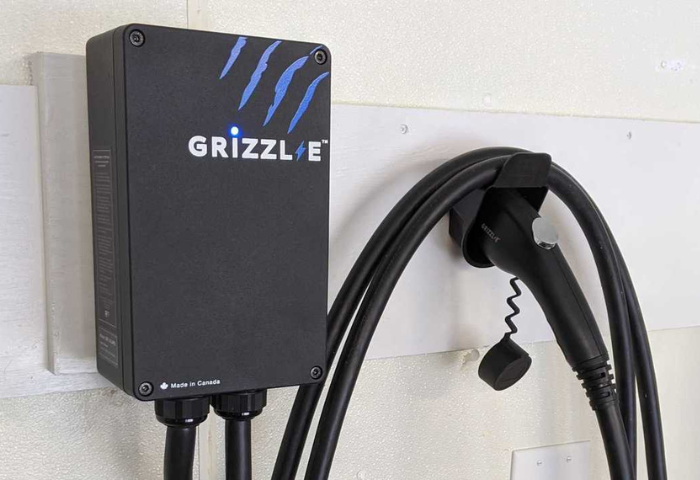
The Grizzly EV Charger is a state-of-the-art charging solution designed to provide fast, reliable, and efficient charging for electric vehicles (EVs). With its cutting-edge technology and user-friendly features, the Grizzly EV Charger offers an exceptional charging experience for EV owners.
Key features of the Grizzly EV Charger include:
- Fast Charging: The Grizzly EV Charger is equipped with advanced charging technology, allowing it to deliver high charging speeds to quickly replenish the battery of electric vehicles.
- Robust Construction: Built to withstand the rigors of daily use, the Grizzly EV Charger features durable construction and weather-resistant materials, making it suitable for both indoor and outdoor installations.
- User-Friendly Interface: The Grizzly EV Charger comes with an intuitive user interface that provides easy access to charging controls and real-time charging status, ensuring a seamless charging experience for EV owners.
- Smart Connectivity: With built-in connectivity features, the Grizzly EV Charger allows users to monitor and manage charging sessions remotely via a mobile app or web portal, providing convenience and peace of mind.
- Safety Features: The Grizzly EV Charger prioritizes safety with features such as overcurrent protection, ground fault detection, and temperature monitoring, ensuring safe and reliable charging for electric vehicles.
- Compatibility: The Grizzly EV Charger is compatible with a wide range of electric vehicles, supporting different charging standards and connector types to accommodate various EV models.
Charging Infrastructure
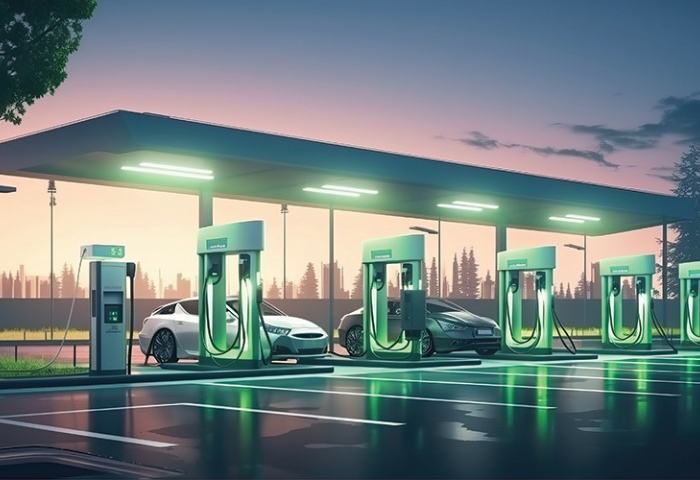
Types of Charging Stations
Charging stations come in various types, each offering different charging speeds and capabilities.
- Level 1 Chargers: These are standard household outlets (120 volts) that provide slow charging and are typically used for overnight charging. They are convenient for residential charging but may not be suitable for fast replenishment of EV batteries.
- Level 2 Chargers: Level 2 chargers operate at higher voltages (typically 240 volts) and offer faster charging speeds compared to Level 1 chargers. They are commonly installed in residential settings, workplaces, and public locations, providing a balance between charging speed and convenience.
- DC Fast Chargers: DC fast chargers, also known as Level 3 chargers, deliver rapid charging by directly converting AC power to DC power, bypassing the vehicle’s onboard charger. They are capable of charging EVs to 80% or more of their battery capacity in a relatively short time, making them ideal for long-distance travel and quick pit stops.
Fast Charging vs. Slow Charging
Fast Charging: Fast charging refers to the process of rapidly replenishing an EV’s battery by delivering a high rate of electrical power. DC fast chargers are the primary technology used for fast charging, enabling EVs to charge quickly, usually in less than an hour.
Slow Charging: Slow charging involves using Level 1 or Level 2 chargers to charge EVs at a slower rate. While slower than fast charging, slow charging is sufficient for overnight charging at home or extended stays at workplaces, providing a convenient and cost-effective charging option for many EV owners.
Charging Options for EV Owners
EV owners have several options for accessing charging infrastructure:
- Public Charging Stations: Public charging stations are located in various locations, such as shopping centers, parking garages, and along highways, providing EV owners with convenient access to charging while on the go.
- Workplace Charging: Many employers offer workplace charging as an employee benefit, allowing EV owners to charge their vehicles while at work.
- Residential Charging: Home charging solutions, including Level 1 and Level 2 chargers, enable EV owners to charge their vehicles overnight in their garage or driveway, providing a convenient and cost-effective charging option.
Charging Networks
Charging networks are organizations that operate and maintain networks of charging stations, providing EV owners with access to charging infrastructure.
- Public Charging Networks: Public charging networks such as ChargePoint, EVgo, and Electrify America manage networks of public charging stations, offering EV owners access to thousands of charging locations nationwide.
- Proprietary Networks: Some automakers and electric utilities operate proprietary charging networks, providing EV owners with access to exclusive charging options and features.
Home charging solutions
Home charging solutions enable EV owners to charge their vehicles conveniently and cost-effectively at home.
- Level 1 Chargers: Level 1 chargers can be plugged into standard household outlets, providing slow charging for EVs. They are suitable for overnight charging and are often included with the purchase of an EV.
- Level 2 Chargers: Level 2 chargers offer faster charging speeds than Level 1 chargers and are typically installed in residential settings, providing EV owners with faster replenishment of their vehicle’s battery.
Grizzly EV Charger Features
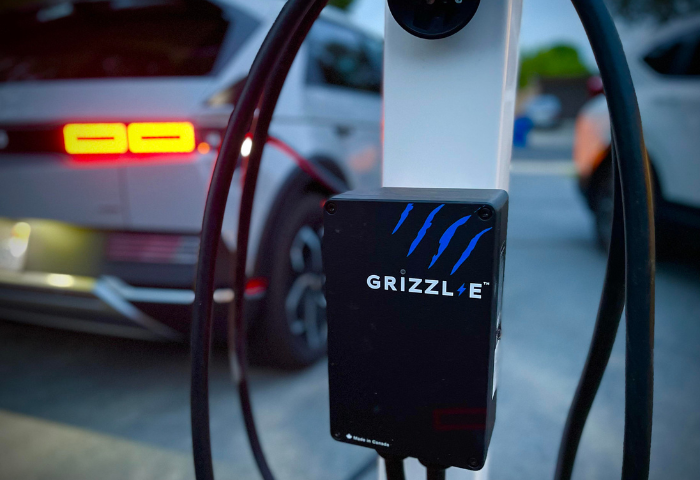
Compatibility with Different EV Models:
Grizzly EV chargers are designed to be compatible with various electric vehicle models, ensuring that users can charge their vehicles regardless of the manufacturer.
Charging Speed:
Grizzly chargers offer fast charging speeds to minimize the time required to charge your electric vehicle. The charging speed may vary depending on the specific model of the charger and the capabilities of the vehicle being charged.
Connectivity and Smart Features:
Grizzly chargers often come with connectivity options and smart features that allow users to monitor and control the charging process remotely. This can include smartphone apps, Wi-Fi connectivity, and compatibility with smart home systems, enabling users to schedule charging sessions, monitor charging status, and receive notifications.
Weatherproof Design:
Grizzly EV chargers are typically designed to withstand various weather conditions, including rain, snow, and extreme temperatures. This weatherproof design ensures that the charger remains operational and safe for outdoor use in all seasons.
Security and safety measures:
Grizzly chargers incorporate multiple safety features to protect both the vehicle and the charging infrastructure. This can include overcurrent protection, overvoltage protection, short circuit protection, ground fault protection, and surge protection. Additionally, some models may offer features such as authentication mechanisms to prevent unauthorized access to the charger.
Installation and Maintenance
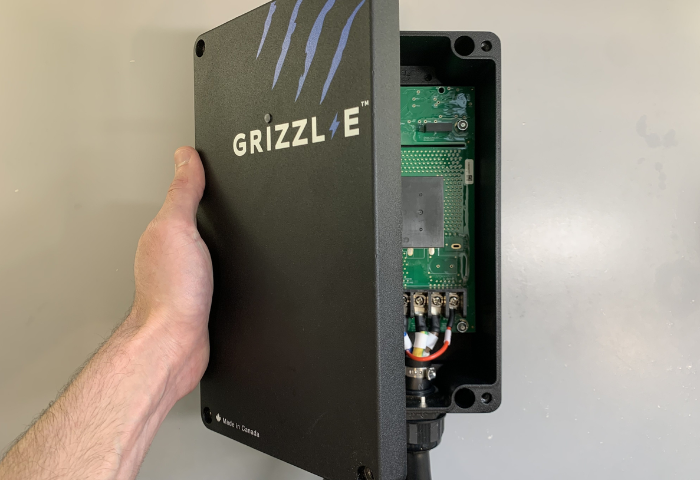
Professional Installation Services
Grizzly EV chargers typically require professional installation to ensure safety and optimal performance. Professional installers are trained to properly wire the charger, connect it to the electrical system, and ensure compliance with local building codes and regulations.
Additionally, professional installers can assess the site for factors such as electrical capacity, location, and mounting requirements to determine the best placement for the charger.
DIY Installation Tips
While professional installation is recommended, some Grizzly EV chargers may offer options for DIY installation for users with electrical experience. If you’re attempting DIY installation, it’s crucial to carefully follow the manufacturer’s instructions and safety guidelines.
This includes properly wiring the charger, using the correct gauge of wiring, and ensuring all electrical connections are secure. However, for most users, especially those without electrical expertise, it’s safer and more reliable to hire a professional installer.
Regular Maintenance Requirements
To maintain optimal performance and safety, Grizzly EV chargers require regular maintenance. This may include periodic inspections to check for signs of wear or damage, cleaning the charger and surrounding area to remove debris, and ensuring proper ventilation to prevent overheating.
Additionally, it’s important to keep the charger’s firmware up-to-date to ensure compatibility with the latest electric vehicle models and software updates.
Troubleshooting Common Issues
Despite proper installation and maintenance, Grizzly EV chargers may encounter occasional issues. Common problems include connectivity issues, charging errors, and power supply issues. Troubleshooting steps may include checking the power supply, resetting the charger, verifying the electrical connections, and ensuring proper communication with the vehicle.
In cases where troubleshooting is unsuccessful, contacting Grizzly’s customer support or a qualified electrician may be necessary to diagnose and resolve the issue.
Cost and Savings

Initial Investment for the Grizzly EV Charger
The initial investment for a Grizzly EV charger can vary depending on the model, features, and installation requirements. On average, the cost of a basic Level 2 charger ranges from a few hundred to over a thousand dollars. Higher-end models with additional features, such as smart connectivity, may cost more.
Additionally, installation costs, including labor and materials, should be factored into the total investment.
Government Incentives for EV Charger Installation
Many governments offer incentives and rebates to encourage the installation of electric vehicle chargers. These incentives may include tax credits, grants, or rebates for both residential and commercial installations. The availability and amount of incentives vary by location, so it’s advisable to research local programs to determine eligibility and potential savings.
Operational Costs and Electricity Usage
The operational costs of using a Grizzly EV charger primarily consist of electricity consumption. The exact electricity usage will depend on factors such as the charging speed, vehicle battery capacity, and charging frequency.
Grizzly chargers typically provide efficient charging, but electricity rates vary by region, so it’s important to consider local electricity costs when estimating operational expenses.
Savings on Fuel and Maintenance
Electric vehicles powered by Grizzly EV chargers offer significant savings compared to traditional gasoline-powered vehicles. Electric vehicles generally have lower fuel costs since electricity is often cheaper than gasoline on a per-mile basis.
Additionally, electric vehicles have fewer moving parts than internal combustion engine vehicles, resulting in lower maintenance costs over the vehicle’s lifetime. Savings on fuel and maintenance can vary depending on individual driving habits, electricity rates, and vehicle efficiency.
Environmental Impact
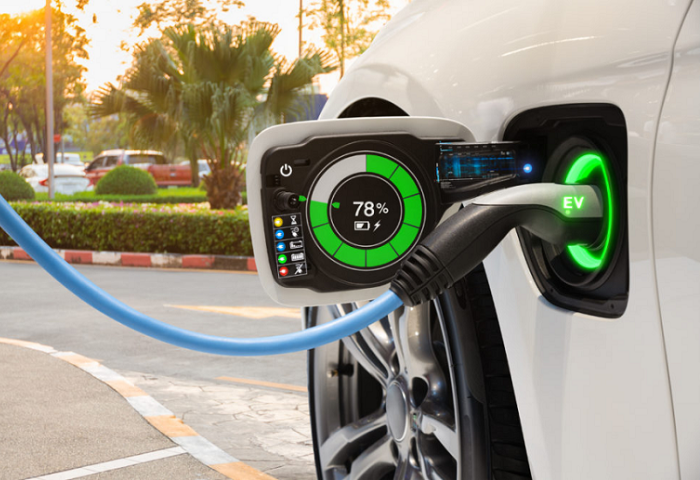
Reducing Carbon Footprint with EV Chargers
Lower Emissions:
The use of EV chargers facilitates the adoption of electric vehicles, which produce zero tailpipe emissions. This directly reduces the release of pollutants like carbon dioxide (CO2), nitrogen oxides (NOx), and particulate matter (PM) compared to internal combustion engine vehicles.
Renewable Energy Integration:
Grizzly EV chargers can be integrated with renewable energy sources such as solar or wind power. When EVs are charged using clean energy, the overall carbon footprint of transportation is significantly reduced.
Lifecycle Emissions Reduction:
While EVs have a higher initial carbon footprint due to battery production, their overall lifecycle emissions are lower than those of traditional vehicles, especially when charged with renewable energy.
Benefits of Clean Energy Transition
Support for Renewable Energy:
EV chargers can act as a catalyst for expanding renewable energy infrastructure. As the demand for clean energy grows to meet the needs of EVs, it can accelerate investments in solar, wind, and other renewable sources.
Grid Stabilization and Smart Charging:
Advanced EV chargers like Grizzly can support smart charging, which allows EVs to charge during off-peak hours when renewable energy is more readily available. This helps balance the grid and make better use of intermittent renewable energy sources.
Energy Storage Potential:
EV batteries can potentially be used for energy storage, providing a buffer for renewable energy and enhancing grid stability. This vehicle-to-grid (V2G) technology allows EVs to discharge electricity back to the grid during peak demand times.
Energy Efficiency and Sustainability
High-Efficiency Charging:
Modern EV chargers are designed to be highly efficient, minimizing energy losses during the charging process. Grizzly EV chargers, for instance, incorporate advanced technology to ensure that a maximum amount of electricity is transferred from the grid to the vehicle.
Sustainable Materials and Design:
The production and installation of EV chargers can be optimized for sustainability by using eco-friendly materials and minimizing waste. Grizzly EV chargers aim to reduce their environmental impact through thoughtful design and sustainable manufacturing practices.
Reduced Dependency on Fossil Fuels:
By promoting the use of EVs and reducing reliance on gasoline and diesel, EV chargers contribute to a decrease in fossil fuel consumption. This shift not only reduces greenhouse gas emissions but also mitigates the environmental risks associated with oil extraction and refining.
Impact on the Grid and Energy Demand
Demand Management:
The widespread adoption of EVs and chargers impacts energy demand patterns. Smart chargers can help manage this demand by shifting charging times to periods of low grid usage or high renewable energy availability.
Infrastructure Development:
The increase in EV chargers necessitates upgrades to the electrical grid to handle higher loads. This can lead to a more robust and resilient grid infrastructure capable of supporting future energy demands.
Grid Services and Flexibility:
EV chargers can provide ancillary services to the grid, such as frequency regulation and voltage support, enhancing overall grid stability. By using smart grid technology, EV chargers can communicate with the grid to optimize energy use and support grid health.
User Experience

Convenience of Charging at Home vs. Public Stations
| Feature | Home Charging with Grizzly EV Chargers | Public Charging Stations |
| Accessibility | Available 24/7 at home | It varies by location and may require travel |
| Charging Time | Overnight or during off-peak hours | Typically faster (fast charging options) |
| Cost | Generally cheaper, especially with off-peak rates | Often more expensive than home charging |
| Convenience | Extremely convenient; no need to leave home | May require waiting or traveling to find an available station |
| Installation | It requires upfront installation cost and setup | No installation needed for the user |
| Usage Monitoring | Easily monitored through a mobile app | Limited monitoring capabilities |
| Scheduling | Can schedule during low-cost periods | Limited scheduling options |
| Energy Source Control | Can choose renewable energy sources if they are available? | Dependent on the station’s energy source |
| User Experience | Personalized and consistent | Can vary greatly depending on station quality and location |
| Maintenance | The user is responsible for maintenance | Maintained by the station provider |
| Range Anxiety | Reduces range anxiety with a full charge daily | It may cause anxiety if stations are far apart or occupied |
| Integration with Home Systems | Can integrate with home energy systems like solar panels | No integration with personal home systems |
| Support for Long Trips | Limited to home location | Essential for long-distance travel and road trips |
User-Friendly Interface
Simple Operation
Grizzly EV chargers are designed with user simplicity in mind. Clear instructions, intuitive controls, and straightforward connections make the charging process easy, even for those new to EVs.
Interactive Display
Many Grizzly chargers feature interactive displays that provide real-time information about the charging process, including charge status, time remaining, and energy usage. This transparency helps users stay informed and manage their charges efficiently.
App Integration and Remote Monitoring
Mobile App
Grizzly EV chargers often come with a dedicated mobile app that enhances the user experience. The app allows users to start or stop charging remotely, schedule charging sessions, and monitor the charging status from anywhere.
Remote Monitoring
Through app integration, users can receive notifications about their charging status, including when charging is complete or if any issues arise. This remote monitoring capability ensures that users are always aware of their vehicle’s charging needs and can address any problems promptly.
Data Insights
The app can also provide valuable data insights, such as historical charging patterns, energy consumption, and cost tracking. This information helps users optimize their charging habits and better understand their energy usage.
Feedback and Reviews from EV Owners
Positive Reviews
- Convenience and Reliability: Many users praise Grizzly EV chargers for their reliability and the convenience of home charging. The ability to wake up to a fully charged vehicle every day is a commonly cited benefit.
- Ease of Use: Users often highlight the user-friendly interface and straightforward installation process, making it accessible even for those who are not tech-savvy.
- App Functionality: The mobile app receives positive feedback for its ease of use and the ability to monitor and control charging remotely. Users appreciate the convenience and control it offers.
Constructive Feedback
- Installation Fees: Some users point out that the initial installation fee for a home charger can be high, but this is frequently more than offset by the long-term savings on fuel and public charging fees.
- Public Charging Network: While Grizzly chargers enhance home charging, users sometimes express the need for a more extensive public charging network to complement their home setup, especially for long-distance travel.
Future Trends and Innovations
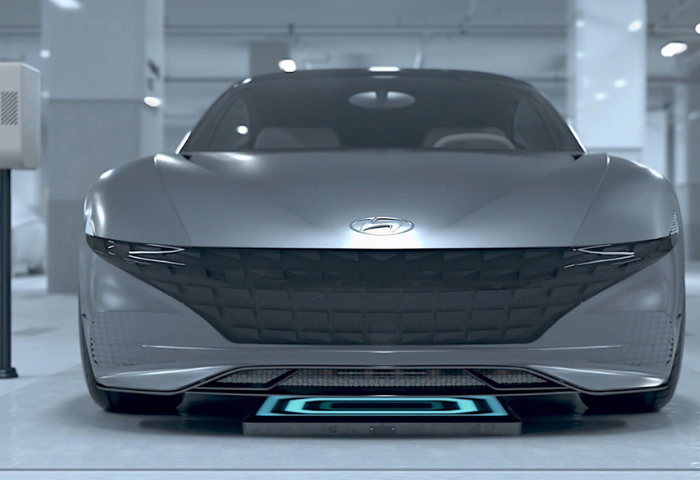
Wireless Charging Technology
Convenience: Wireless charging, also known as inductive charging, eliminates the need for physical connectors. EV owners can simply park their vehicles over a charging pad, and the charging process begins automatically. This technology enhances user convenience and reduces wear and tear on charging ports.
Safety and Aesthetics: Wireless charging reduces the risk of tripping over cables and can be integrated seamlessly into parking spaces, maintaining the aesthetics of home garages and public charging areas.
Efficiency Improvements: Ongoing research is focused on improving the efficiency of wireless charging systems to match or exceed traditional plug-in chargers. Enhanced alignment and power transfer methods are key areas of development.
Advancements in Battery Technology
Faster Charging: New battery technologies, such as solid-state batteries, promise significantly faster charging times. Grizzly EV chargers will need to adapt to these advancements to provide rapid charging without compromising battery health.
Increased Capacity: Higher-capacity batteries will extend the range of EVs, reducing the frequency of charging. This will make home chargers even more practical and convenient for daily use and will influence the design and capabilities of Grizzly EV chargers to handle higher energy loads.
Longevity and Durability: Improved battery life cycles will reduce the need for frequent replacements, making EV ownership more cost-effective. Grizzly EV chargers will support these advanced batteries by offering optimized charging algorithms to maximize battery lifespan.
Integration with Renewable Energy Sources
Smart Grid Integration: Grizzly EV chargers will increasingly integrate with smart grids to balance demand and supply efficiently. This integration will allow for dynamic adjustment of charging rates based on grid conditions and availability of renewable energy.
Home Energy Systems: Integration with home solar panels and energy storage systems will enable EV owners to charge their vehicles using clean, self-generated energy. Grizzly chargers will facilitate seamless switching between grid and renewable energy sources, optimizing energy use and costs.
Bidirectional Charging (V2G): Vehicle-to-grid technology will enable EVs to act as energy storage units, supplying power back to the grid during peak demand. Grizzly EV chargers will play a critical role in managing this bidirectional energy flow, contributing to grid stability and energy efficiency.
AI-Powered Charging Solutions
Predictive Charging: AI algorithms will predict optimal charging times based on user behavior, electricity prices, and grid demand. This will ensure that EVs are charged at the most cost-effective and environmentally friendly times.
Fault Detection and Maintenance: AI can monitor the health of the charging system and the vehicle’s battery in real-time, predicting potential issues before they become serious. This proactive maintenance approach will enhance the reliability and longevity of both the chargers and the EVs.
Personalized User Experience: AI will provide personalized charging recommendations and reminders based on individual usage patterns. Grizzly EV chargers will use AI to create a tailored charging experience, improving user satisfaction and convenience.
Energy Management: AI will optimize the energy distribution from renewable sources, home batteries, and the grid, ensuring efficient energy use. This intelligent energy management will help reduce costs and environmental impacts.
Regulatory Landscape
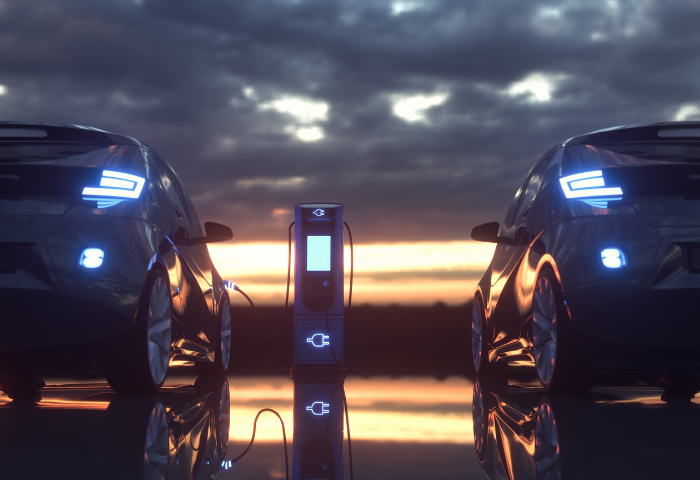
Zoning Laws and Permitting for Charger Installation
Residential Installations
- Local Zoning Laws: Zoning laws vary by municipality and can affect where and how EV chargers can be installed. These laws typically regulate installations in residential areas to ensure they meet safety and aesthetic standards.
- Permitting Requirements: Homeowners often need to obtain permits to install EV chargers. This process can include electrical inspections and adherence to building codes to ensure the installation is safe and compliant with local regulations.
Commercial and public installations
- Commercial Zoning: Installing EV chargers in commercial areas (e.g., office buildings, shopping centers) requires compliance with commercial zoning regulations. These can include parking space designations, accessibility requirements, and aesthetic guidelines.
- Permits and Approvals: Installing public charging stations often requires more extensive permitting, including environmental assessments and approvals from multiple regulatory bodies. This ensures that installations meet public safety and environmental standards.
Utility Regulations for EV Charging Infrastructure
Rate Structures
- Time-of-Use (TOU) Rates: Utilities may offer TOU rates that incentivize charging during off-peak hours to reduce strain on the grid. Grizzly EV chargers can be programmed to charge during these periods to take advantage of lower rates.
- Demand Charges: For commercial installations, utilities may impose demand charges based on peak power consumption. This can affect the cost of operating public and commercial EV chargers, influencing their financial viability.
Grid Impact and Infrastructure
- Grid Integration: Utilities regulate how EV chargers interact with the grid, including requirements for smart charging capabilities to manage demand and ensure grid stability. Grizzly chargers must comply with these regulations to avoid overloading local infrastructure.
- Upgrades and Incentives: Utilities may offer incentives or rebates for installing EV chargers, especially those that support grid-friendly features like demand response and load balancing. These incentives can offset installation costs and encourage adoption.
Government Policies Supporting EV Adoption
Federal Policies
- Tax Credits and Incentives: The federal government often provides tax credits and rebates for purchasing EVs and installing home or commercial EV chargers. These incentives can significantly reduce the upfront cost for consumers and businesses.
- Funding Programs: Federal programs, such as grants and loans, support the development of EV charging infrastructure. These programs aim to expand the availability of charging stations, particularly in underserved areas.
State and Local Policies
- State Incentives: Many states offer additional incentives for EV adoption, including rebates for EV purchases and charger installations, grants for public charging infrastructure, and reduced registration fees for EVs.
- Local Initiatives: Local governments may implement initiatives to encourage EV adoption, such as installing public chargers in municipal parking lots, offering free or discounted charging, and providing preferred parking for EVs.
Interoperability Standards for Charging Networks
Universal Standards
- Charging Connectors: Standards like the Combined Charging System (CCS), CHAdeMO, and Tesla’s Supercharger network ensure that EV chargers are compatible with a wide range of vehicles. Grizzly EV chargers need to support these standards to ensure broad compatibility.
- Communication Protocols: Protocols such as the Open Charge Point Protocol (OCPP) allow for interoperability between different brands of chargers and networks. This ensures that EV drivers can use multiple charging networks seamlessly.
Network Integration
- Roaming Agreements: These agreements between different charging network providers enable EV owners to access multiple networks with a single account. Grizzly chargers can participate in these agreements to offer users a more flexible charging experience.
- Data Sharing: Standardized data sharing protocols facilitate the integration of charging data with utility systems and energy management platforms. This supports efficient grid management and enhances the user experience by providing real-time charging information.
Market Analysis

Global Demand for EV Chargers
Current Demand
- Rising EV Adoption: The global demand for EV chargers is directly correlated with the increasing adoption of electric vehicles. As of 2024, the EV market has seen significant growth due to technological advancements, decreasing battery costs, and supportive government policies.
- Charging Infrastructure Expansion: Countries around the world are investing heavily in EV charging infrastructure to support this growing market. Public and private sector initiatives are aimed at expanding the availability of charging stations to reduce range anxiety and promote EV usage.
Regional Variations
- North America: strong demand fueled by accommodating government policies, rising EV sales, and sizeable investments in charging infrastructure by both private businesses and governmental organizations.
- Europe: strong demand due to stringent emission regulations, government incentives, and a well-established network of public chargers. Countries like Norway, Germany, and the Netherlands are leading the way.
- Asia-Pacific: rapid growth in countries like China and Japan, driven by government mandates, subsidies, and the rising popularity of EVs among consumers. China, in particular, has a massive market for EV chargers due to its large EV fleet.
Key Players in the EV Charger Market
Leading Companies
- Tesla is known for its Supercharger network, which provides fast charging specifically for Tesla vehicles but is gradually opening up to other EVs.
- ChargePoint is a leading player in North America with a large network of public and private chargers, offering comprehensive solutions for both home and commercial charging.
- Siemens provides a wide range of EV charging solutions, including high-power fast chargers and residential chargers, with a strong presence in Europe.
- ABB offers a diverse portfolio of EV chargers, including ultra-fast charging stations, and has a strong market presence in Europe, North America, and Asia.
- Grizzly is positioned as a key player in the home charging segment, known for reliable and user-friendly EV chargers that integrate advanced technologies.
New Entrants and Innovations
- New Market Entrants: The market is also seeing new entrants who are bringing innovative technologies and competitive pricing to capture market share. These include companies specializing in wireless charging and AI-driven charging solutions.
- Technological Advancements: Innovations such as bidirectional charging, smart grid integration, and advanced battery management systems are becoming key differentiators.
Price Trends and Competitive Analysis
Price Trends
- Decreasing Costs: The cost of EV chargers has been decreasing due to economies of scale, technological advancements, and increased competition. This trend is expected to continue, making EV chargers more affordable for consumers.
- Cost Variations: Prices vary based on charger type (e.g., Level 1, Level 2, DC fast chargers), power output, and additional features such as smart connectivity and app integration.
Competitive Analysis
- Feature Differentiation: Companies are differentiating their products through advanced features like wireless charging, AI integration, and compatibility with renewable energy sources.
- Service and Support: After-sales service, warranty, and customer support are critical factors influencing consumer choice. Companies offering comprehensive support packages are gaining a competitive edge.
- Network Integration: Compatibility with existing charging networks and the ability to integrate with smart home systems are important factors. Companies that provide seamless integration options are more attractive to tech-savvy consumers.
Forecast for the Future
Market Expansion:
- Prolonged Growth: As electric vehicle adoption picks up speed over the next ten years, the market for EV chargers is predicted to keep growing strongly. From 2024 to 2030, the worldwide market for EV chargers is anticipated to expand at a compound annual growth rate (CAGR) of around 25–30%.
- Public Infrastructure Investments: Significant investments in public charging infrastructure will be a major driver. Governments and private entities are expected to increase spending to ensure the widespread availability of charging stations.
Technological Innovations:
- Advanced Charging Technologies: Wireless charging, ultra-fast charging, and V2G (vehicle-to-grid) technologies will become more mainstream, offering new revenue streams and business models.
- Integration with Renewable Energy: The integration of EV chargers with renewable energy sources and smart grids will become more prevalent, promoting sustainable energy consumption.
Market Consolidation:
- Mergers and Acquisitions: The market may see consolidation as larger players acquire smaller companies to enhance their technology portfolio and market reach.
- Strategic Partnerships: Collaborations between automakers, tech companies, and energy providers will shape market dynamics, leading to innovative products and services.
Grizzly EV chargers are at the forefront of providing fast, reliable, and future-ready charging solutions. By focusing on high-speed charging, robust design, smart features, and environmental sustainability, Grizzly ensures that EV owners have access to the best charging technology available today and in the future. Whether for home use or public infrastructure, Grizzly chargers offer a comprehensive solution that meets the demands of the modern EV market.

Henry Michael is a leading expert in EV charging station research, specializing in innovative solutions for electric vehicle infrastructure. With a passion for sustainability and technological advancement, he is dedicated to advancing the accessibility and efficiency of EV charging worldwide.
